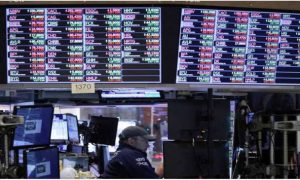Nvidia (NASDAQ: NVDA) CEO Jen-Hsun Huang has been selling shares of his company’s stock over the past two months, including 840,000 shares last week worth $59.3 million. The CEO has taken advantage of the stock’s huge rise in share price, which has more than doubled this year and is up an astronomical 2,700% over the past five years.
Let’s take a closer close at the recent sales of Nvidia by executives and whether investors should follow suit.
Executives dump Nvidia shares
Huang’s disposal of Nvidia shares last week continues a pattern of him selling the stock in recent months. Since June, Huang has sold 2.88 million shares of Nvidia while also gifting another 445,000 shares.
The sales are being done through what is known as a Rule 10b5-1 plan, which allows corporate insiders to sell company stock using predetermined trading instructions. The plans begin after a “cooling off period” and are generally set up to avoid any conflicts of interest and avoid insider trading issues.
Also Read– Stock market today: World shares are mixed after shooting at Trump rally, weaker China data
Huang initially set up the 10b5-1 plan in March and plans to sell 6 million shares (split adjusted) by the end of March 2025. However, with the CEO already selling nearly half of the 6 million shares tabbed to be sold, he is on pace to complete the trading plan in the next few months.
While 6 million shares of Nvidia is a lot of stock, Huang still currently owns 864.1 million shares of Nvidia. As such, the stock sales are really just a drop in the bucket for the CEO.
Also Read– Stock market today: US stocks close at record highs after dovish June jobs report
Now Huang isn’t the only Nvidia insider who has been selling stock over the past two months. CFO Colette Kress, Principal Accounting Officer Donald Robertson Jr., EVP of Operations Debora Shoquist, EVP of Worldwide Field Operations Ajay Puri, and a few directors have also been selling shares. Most, however, continue to hold substantial positions in Nvidia stock.
Given the huge moves in the stock over the past few years, it shouldn’t come as a surprise that Nvidia executives would want to cash in on some of their good fortune. It also isn’t a bad portfolio management move to diversify some of their holding away from what very likely is their greatest source of wealth by far.
Read More:- Stock market today: French shares up 2.8% as far right party takes lead in first round of election

Should investors follow suit and sell Nvidia shares?
This is a bit more complicated question than it seems, as every individual’s situation is different. For investors who have racked up huge gains in the stock, it could certainly be a prudent decision to trim positions and take some profits. Having one position be a large percentage of your portfolio, for example, increases risks, and at the end of the day, no one has a crystal ball into the future.
That said, Nvidia continues to look to have a long runway of growth with artificial intelligence (AI) still in its early days and companies continuing to look to build out data-center infrastructure to support AI applications. Nvidia’s graphic processings units (GPUs) are used for both training large language models (LLMs) and AI inference, and demand for its newest chips continues to outstrip supply.
Read More:- 2 Unstoppable Growth Stocks That Are Screaming Buys in June
While not the only GPU maker, the company has been able to create a wide moat through its Compute Unified Device Architecture (CUDA) software platform, which is the program whereby developers generally learn to program GPUs. This, combined with the company pushing the envelope on new chip architecture development to every year, should help keep Nvidia as the undisputed market leader in the build-out of AI infrastructure.
Meanwhile, despite its strong performance over the past few years, the stock still trades at an attractive valuation. Based on 2025 analyst estimates, Nvidia trades at a forward price-to-earnings (P/E) ratio of about 32 times, while its forward price/earnings-to-growth (PEG) ratio is under 0.7 times. Any number under 1 times is generally considered undervalued, especially for a growth stock.
Read More:- 2 Stocks Down More Than 30% to Buy Right Now

Now that doesn’t mean that Nvidia is without risks. The largest risk to the stock is that GPU demand cools once the initial clamor for the hardware is met. If this happens and baseline demand turns out to be much lower than current demand, then the stock will tumble.
Thus, while I think Nvidia currently continues to look like an attractive buy based on its potential and valuation, it’s still a smart move to take some profits on the way up and trim positions to keep them at appropriate levels. That’s just good risk management.
Read More:- 3 Powerhouse Growth ETFs With a History of Outperforming the S&P 500
Should you invest $1,000 in Nvidia right now?
Before you buy stock in Nvidia, consider this:
The Motley Fool Stock Advisor analyst team just identified what they believe are the 10 best stocks for investors to buy now… and Nvidia wasn’t one of them. The 10 stocks that made the cut could produce monster returns in the coming years.
Read More:- Major analyst unveils alarming S&P 500 predictions
Consider when Nvidia made this list on April 15, 2005… if you invested $1,000 at the time of our recommendation, you’d have $757,001!*
Stock Advisor provides investors with an easy-to-follow blueprint for success, including guidance on building a portfolio, regular updates from analysts, and two new stock picks each month. The Stock Advisor service has more than quadrupled the return of S&P 500 since 2002*.





































